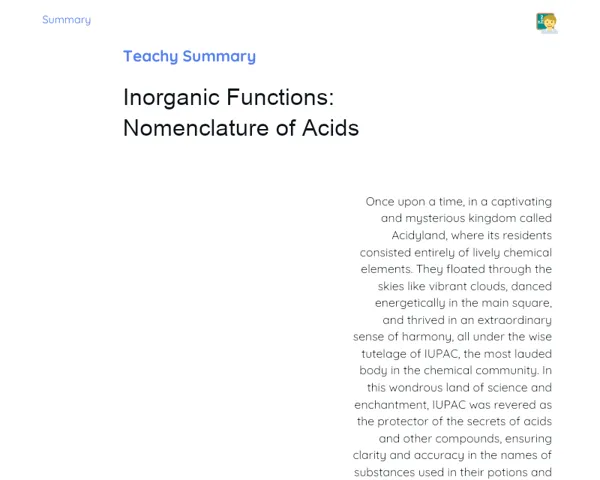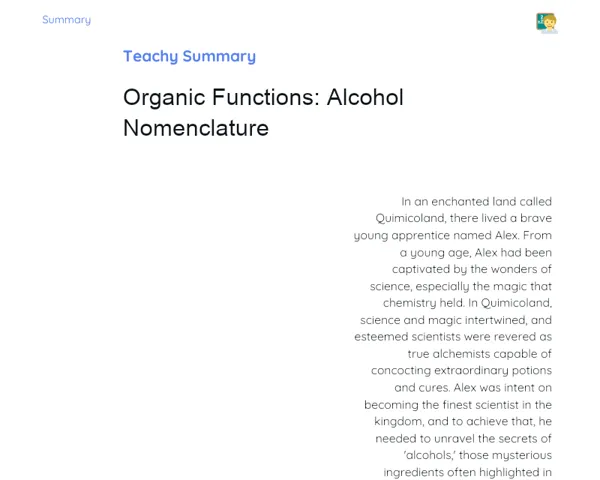Summary Tradisional | State Changes
Contextualization
The changes in the states of matter are fundamental occurrences that take place due to shifts in temperature and pressure. Matter can exist in three primary states: solid, liquid, and gas. Each change of state involves moving between these different forms and is characterised by specific processes. Grasping these processes is vital for explaining many natural occurrences and practical applications that we encounter in daily life.
For instance, melting and solidification are state changes that involve the shift between solid and liquid. When a solid, like ice, is heated, it absorbs thermal energy and changes into a liquid – this is called melting. The reverse process, solidification, occurs when a liquid, such as water, loses thermal energy and turns back into a solid. Other key processes include vaporisation (the change from liquid to gas), condensation (the change from gas to liquid), and sublimation (the direct change from solid to gas).
To Remember!
Melting
Melting is the process where a substance shifts from a solid to a liquid state. This happens when the substance reaches its melting point, which is the temperature at which the intermolecular forces holding the particles in the solid state are overcome due to an increase in thermal energy. A common everyday example of melting is ice transforming into water when it is warmed past 0°C (32°F).
During melting, the particles of a substance absorb thermal energy, causing them to vibrate more vigorously and move apart, breaking the bonds that keep them locked in a solid structure. This is an endothermic process, meaning it requires the uptake of energy. This absorbed energy enables particles to break free from intermolecular forces and flow more freely as a liquid.
Melting can be observed in various everyday situations and has multiple practical applications. For example, when a candle burns, the solid wax melts into a liquid due to the heat of the flame. Another example is the melting of metals in industries like metallurgy, where liquids are cast into forms and manufactured into products.
-
Melting is the transition from solid to liquid.
-
Occurs when the melting point is reached.
-
Requires the absorption of thermal energy.
Solidification
Solidification is the reverse of melting; it describes the process where a substance transitions from a liquid to a solid state. This occurs when a liquid loses thermal energy and reaches its freezing point, the temperature at which the particles slow down and begin to congregate, forming a rigid structure. A typical example is water turning into ice when cooled to 0°C (32°F).
During solidification, the particles of a substance relinquish thermal energy, resulting in them moving more slowly and coming closer together, allowing intermolecular forces to unite them into a solid. This is an exothermic process, meaning it releases energy. The energy released helps the particles arrange neatly into a solid state.
Solidification is an important process in fields like the food industry for ice production and freezing food, as well as in manufacturing where liquid metals solidify in moulds to create specific components.
-
Solidification is the transition from liquid to solid.
-
Occurs when the freezing point is reached.
-
Releases thermal energy during the process.
Vaporization
Vaporization refers to the transition of a substance from a liquid to a gas. This can happen in two ways: evaporation and boiling. Evaporation is a gradual process that occurs at the surface of the liquid while boiling is a quick process happening when the liquid reaches its boiling point, forming bubbles throughout. An example of evaporation can be seen when a puddle of water dries up in the sun, while water boiling at 100°C (212°F) provides a clear example of boiling.
During evaporation, the particles at the surface of the liquid gain enough energy to surpass intermolecular forces and turn into gas. This happens at temperatures below the boiling point and is influenced by factors like ambient temperature, humidity, and the surface area of the liquid. Boiling occurs once the temperature of the liquid hits the boiling point, with the vapor pressure equalling atmospheric pressure, forming bubbles that rise to the surface and release vapor.
Vaporization is critical in the natural water cycle, contributing to cloud formation and precipitation. Additionally, it plays a significant role in industrial processes such as liquid distillation and energy generation in power plants.
-
Vaporization is the transition from liquid to gas.
-
Can take place via evaporation or boiling.
-
Evaporation is slow and occurs at the liquid surface; boiling is fast and happens throughout the liquid.
Condensation
Condensation is the process where a substance moves from a gaseous state to a liquid. This happens when vapor cools down and loses thermal energy, allowing the particles to come closer and form intermolecular bonds. A familiar example is the water droplets forming on a cold glass on a hot day, where water vapor in the air condenses on the cold surface of the glass.
In condensation, vapor particles lose thermal energy, resulting in slower movement and closer proximity, facilitating the formation of a liquid state due to the activation of intermolecular forces as the vapor cools down. This process is exothermic, releasing heat energy.
Condensation is key in the water cycle as it aids in cloud formation and precipitation. It is also used in practical applications such as refrigeration and distillation, where vapor is condensed to isolate mix components.
-
Condensation is the shift from gas to liquid.
-
Occurs when vapor loses thermal energy.
-
Releases energy in the form of heat.
Key Terms
-
State Changes: Transitions among solid, liquid, and gas.
-
Melting: The process of changing from solid to liquid.
-
Solidification: The process of changing from liquid to solid.
-
Vaporization: The process of changing from liquid to gas.
-
Evaporation: Slow vaporization at the surface of a liquid.
-
Boiling: Rapid vaporization that occurs throughout the liquid.
-
Condensation: The process of changing from gas to liquid.
-
Sublimation: The direct transition from solid to gas.
-
Resublimation: The direct transition from gas to solid.
Important Conclusions
In this lesson, we investigated the various changes in the states of matter, fundamental phenomena driven by alterations in temperature and pressure. We discussed the processes of melting, solidification, vaporization, condensation, sublimation, and resublimation, along with how each process involves specific transitions among solid, liquid, and gas states. Everyday examples, such as melting ice and boiling water, were used to illustrate these concepts for better comprehension.
Understanding these processes is crucial not only for grasping natural occurrences but also for numerous practical applications across various fields, like industry, meteorology, and daily tasks. For instance, melting and solidification are essential in materials manufacturing, while vaporization and condensation play significant roles in the water cycle and energy generation.
We highlighted the relevance of this knowledge by encouraging students to observe these changes in their daily lives and contemplate their practical and scientific implications. Understanding these processes nurtures a greater appreciation for the science behind numerous natural events and their applications in the real world.
Study Tips
-
Review the practical examples covered in class and try to identify other instances in your daily life involving state changes.
-
Draw diagrams or concept maps illustrating the transitions between solid, liquid, and gas states, including melting, solidification, vaporization, condensation, sublimation, and resublimation.
-
Read supplementary materials like textbooks and science articles to deepen your understanding of state changes and their contexts.



